
Le Corbusier: A Decisive Moment in Architecture
From the book L’ Art décoratif d’aujourd’hui
Source
Stavba, měsíčník pro stavební umění, ročník IV., 1925-1926, strana 51-56
Stavba, měsíčník pro stavební umění, ročník IV., 1925-1926, strana 51-56
Publisher
Petr Šmídek
15.08.2018 21:40
Petr Šmídek
15.08.2018 21:40
Le Corbusier
Cit for justice demands that at the moment of the demise of decorative arts, the services and work of several active, enthusiastic, and selfless generations be acknowledged. If the accelerated march of time drives the development of a new and pure sentiment, it is fitting to honor those who were the essential workers of that development.
With decorative art, a new spirit emerged, born of the machine, pushing aside untouched and blind masses, lost in their ignorance of the historical moment marking the glorious end of the pre-machine era.
The spirit, which awakens, which is born, which marvels, which fights against the stifling atmosphere, which conquers space and one day secures itself clearly through an ideal formulated precisely, as it was conceived precisely – this spirit fought under the banner of decorative art. This is what must be shown and acknowledged; it is also just that the butterfly, leaving the cocoon, should simultaneously say: goodbye and thank you.
To our childhood, Ruskin preached. An expansive, complex, contradictory, paradoxical apostle. The times were unbearable: it could not last; it was dull bourgeoisie, stupid, submerged in materialism, adorned with idiotic and entirely mechanical decoration, decoration fabricated by machines that produced, without being able to prevent it, to the cheers of Mr. Homaise, paper-mâché and cast-iron friezes. Ruskin spoke of spirituality. In his "The Seven Lamps of Architecture" shone the lamp of Sacrifice, the lamp of Truth, the lamp of Humility.
He pointed out to the crowd, bewildered by the first advantages of emerging machinism, the honor: "Go to Sant Giovanni et Paolo in Venice, take a long ladder, lean it against the most magnificent tombstone, namely Vendramin's tomb, climb to the top of the ladder and look at the face of Vendramin, lying on his catafalque, which shows itself in profile; and look, leaning over this profile at the other face of the head. This second face is not carved! Misery! Lies! Falsehood, treason. Everything in this magnificent and immense tomb is false. This tomb is the work of the devil. Go to the Venetian archives, you will discover that the sculptor who was so royally paid to create this magnificent tomb was a fraud who was expelled from Venice for having committed forgeries in the documents.
Thus Ruskin acted upon our young sensitivity with deep challenges.
Grasset was a geometeer and algebraist of flowers. One had to admire with him all flowers and the secrets of their structure, love them so much that it was necessary to spread them across all works we would have liked to undertake. Our youth was enlightened by the wonders of nature, and our hours of study leaned over thousands of flowers and insects; trees, clouds, and birds were the subjects of our questions; we tried to comprehend the curve of their existence and concluded that we admitted that only nature is beautiful and we could be only humble imitators of their forms and their miraculous masses.
Ruskin questioned the floral heads of the Doge's palace, examined its porticoes and chairs, sifted through the Amiens Bible, while Grasset, with a flower in hand and the scalpel of a botanical surgeon in hand, founded the Grammar of Ornament.
We were told: "Go quietly to look at the great album of Qwen Jones: The History of Ornament. This was a more serious test. One by one, pure ornaments paraded, which man created entirely from his head. Ah, but here we saw the natural man the most, and if nature was omnipresent, so was man here with his crystallization abilities, with his geometric will of form. From nature we moved to man. From imitation to creation. It was a beautiful and truthful book, for it summarized everything that was created, deeply created: the decoration of the savage, decoration of the renaissance, gothic, romanesque style. Rome, China. Indian decoration, Greek, Assyrian, Egyptian, etc. With this book, we felt how the problem is posed: Man creates a work that moves him.
The nothingness of artistic objects ruled the spirit of our fathers. The monument to Meissonnier was just being completed. That was all. Ruskin, William Morris, Walter Crane established a printing house in England to produce beautiful books (and God knows if this modest return to medieval missals is unpleasant for us). Then in 1900, dazzling collections of objects appeared in Paris, where nature, neglecting geometry in an effective bath, writhes in the direct life of materials and substances that suffer from it. But there was noble effort in it, remarkable courage, amazing boldness, a true revolution. In 1900, the fire ignited in souls. People began to speak of decorative art. Conflicts arose: great art, minor art. Two camps.
There was dreaming of houses that would look like the mighty stump of wild clematis (Gallé). The past was examined to find evidence, and the gothic with all that flourished upon it, with all the flowers and beasts, was held in seriousness. Water, earth, sky, botanical and zoological gardens, museums, everywhere an indescribable love for God's creation was sought. Ruskin softened hearts.
Elsewhere, other problems, problems of construction, were discussed rather dryly; architecture was taking root.
An enthusiasm for exoticism arises: China, Japan, India, Persia. Today, it requires a certain energy to emphasize our Western perspective.
Gallé lived a beautiful life, split between direct study of nature and the whims of the fire of his pottery kiln. Gallé left us objects that are beautiful works of artistry and sentiment... so full of sentiment, so contradictory to today's production of decorative arts, which has now distanced itself far from nature and descended into the archaeology of Louis Philippe or the second empire. Gallé is a commendable man and his work is commendable.
Pampered objects, materials torn from the fire – all in a state of birth of emotion, emotional outpouring, which we can call "sincerity". Such purity of heart impacts judgment as Ruskin's preachings already did. Decorative art engages public opinion. Precious and useless works are lined up in showcases next to Japanese knick-knacks.
They were knick-knacks. The number of the audience that enjoyed caressing beautiful knick-knacks and stroking the flowers of free nature was growing. Meanwhile, Otto Wagner in Vienna, de Baudot and August Perret in Paris aimed to provide architecture with new resources, agreeing to discard all traditional aesthetic customs. These symptoms encouraged the hopes of the protagonists of the movement. It was chaos; curiosity awakened. A great literature was born: Magazines spread a sense of art in the household.
Young ladies went crazy for decorative art: pyrography, chisel work, and embroidery. In the schedules of girls' boarding schools, there were written: applied arts, art history.
At that moment we judge that decorative art among young women would decline when furniture makers wanted to show the weight of their name and their renewed activities, that in this field, more valuable abilities belong to men: the overall harmony of organization, style, proportion, harmony, proportion.
There was a healthy core of architecture in this. Furniture makers approached the truth. The question of architecture was already sharpening; elsewhere, Loos wrote that sensational article around 1912 "Ornament and Crime" and Auguste Perret built (1906) the Ponthieu garage.
It was said that ornament typically conceals construction errors.
Proof that they aimed to construct well.
Moreover, when a new constructive system is born, restless times arrive. -- Rome was not built in a day. Think of the development of the automobile in twenty years. Concrete had its uncertainties and gaps. There was still no clarity about the artistic system that spontaneously develops from the constructive system. The search for an artistic system of reinforced concrete leads us to the present moment. Here we are.
Thus up until this moment so much effort, so many nearly crusades, Ruskin, Grasset, and Gallé acted deeply and because a decisive moment in architecture
was about to strike — the conclusion of the century of machine power — a remarkable event in public opinion occurred. The spirit of the time reached architecture...
Decorative furniture makers are starting to understand that one can no longer decorate. They no longer produce furniture in forms of wild clematis tendrils. Architects no longer study "The Amiens Bible". All this fell: both would rather produce a modern "Louis Philippe" or Louis XVI, in their resolve to no longer decorate.
Yet as a consequence of the reborn architecture, a joyful interest in polychromy developed. An interest in color for itself and on its own. Colorful symphonies, in this is the triumph of furniture-making. Colors and materials. Dancing in colors. When playing with colors, the key is to play well with them. Ragoûts, the charming kitchen. Colors, materials.
What silks, soft to the touch, marbles that crawl and shine, bronzes and gilding that look so rich. Black according to scorching crimson, silver Byzantine and Oriental fittings.
Everything plummets into cocaine intoxication. Let us conclude.
I think this is soon too much.
We set off on a crusade named Diogenes and lime.*)
It is interesting to realize a fifty-year development, to know where we come from and where we are going!
Lime, Diogenes. A decisive moment in architecture. Truth, a sense of truth. And artistry. Great art lives off of poor means. Now buildings are rising up almost everywhere, in America, Russia, Germany, Czechoslovakia, the Netherlands, in France houses are being built where the problem of proportion and construction is solved, devoid of decoration. Decoration is dead and the spirit of architecture is emphasized.
Indeed, what happened? An era of the machine was born and all except for the incoming twenty-year generation, we are stuck with our roots in the agony of the past age. Around 1880 factories were blackened with soot, machines were black and dirty and produced hideous objects. Villagers shot at passing trains that penetrated the areas. Zola, etc. Poets were outraged. Huysmans' cathedral. The turnabout of the same author. The machine is hideous, a rejected time, the world is crashing, etc. Protest. Looking back to the past, enviously.
Ruskin's sweet voice: "Behold the flowers, insects, and beasts of good God." The soul of Giotto, the joy of primitives. Pre-Raphaelitism. Behold, in rational France a call to nature, analysis. Naturalist Fabre moves us. It is understood that nature is organized. We open our eyes. 1900. A truly beautiful moment.
Germany, which was building full steam ahead, grasped the movement. Painters designed houses. Darmstadt and its consequences. But houses do not live without construction. There is much ado about nothing. None of that will come to fruition. And if something does: effect. The Munich crowd comes to Paris. Furniture. 1914. Salon d'Automne. The breakthrough. The old world was broken, trampled, buried. Cubism of the first predecessors, deeply serious proves that everything became a problem again then and that even around 1910 the forces of revolt and ascetic masculinity were already manifesting, as befits
conspirators who want to overturn the order of things. That happened. Technique, in the meantime, dared everything. Building techniques cleansed themselves, new systems emerged.
We have reached a clear conception. Decoration is no longer possible. Our vivid understanding of nature, its beauties, its forces, all of this summarized in the system of architectural organization.
Architecture is here to address our house, our comfort, our heart. Comfort and proportion. Reason and aesthetics. Machine and artistry, peace and beauty.
*) Diogenes and whitening with lime is for the author of the book a symbol of architectural economy against decorative luxury.
P. ed.
With decorative art, a new spirit emerged, born of the machine, pushing aside untouched and blind masses, lost in their ignorance of the historical moment marking the glorious end of the pre-machine era.
The spirit, which awakens, which is born, which marvels, which fights against the stifling atmosphere, which conquers space and one day secures itself clearly through an ideal formulated precisely, as it was conceived precisely – this spirit fought under the banner of decorative art. This is what must be shown and acknowledged; it is also just that the butterfly, leaving the cocoon, should simultaneously say: goodbye and thank you.
To our childhood, Ruskin preached. An expansive, complex, contradictory, paradoxical apostle. The times were unbearable: it could not last; it was dull bourgeoisie, stupid, submerged in materialism, adorned with idiotic and entirely mechanical decoration, decoration fabricated by machines that produced, without being able to prevent it, to the cheers of Mr. Homaise, paper-mâché and cast-iron friezes. Ruskin spoke of spirituality. In his "The Seven Lamps of Architecture" shone the lamp of Sacrifice, the lamp of Truth, the lamp of Humility.
He pointed out to the crowd, bewildered by the first advantages of emerging machinism, the honor: "Go to Sant Giovanni et Paolo in Venice, take a long ladder, lean it against the most magnificent tombstone, namely Vendramin's tomb, climb to the top of the ladder and look at the face of Vendramin, lying on his catafalque, which shows itself in profile; and look, leaning over this profile at the other face of the head. This second face is not carved! Misery! Lies! Falsehood, treason. Everything in this magnificent and immense tomb is false. This tomb is the work of the devil. Go to the Venetian archives, you will discover that the sculptor who was so royally paid to create this magnificent tomb was a fraud who was expelled from Venice for having committed forgeries in the documents.
Thus Ruskin acted upon our young sensitivity with deep challenges.
Grasset was a geometeer and algebraist of flowers. One had to admire with him all flowers and the secrets of their structure, love them so much that it was necessary to spread them across all works we would have liked to undertake. Our youth was enlightened by the wonders of nature, and our hours of study leaned over thousands of flowers and insects; trees, clouds, and birds were the subjects of our questions; we tried to comprehend the curve of their existence and concluded that we admitted that only nature is beautiful and we could be only humble imitators of their forms and their miraculous masses.
Ruskin questioned the floral heads of the Doge's palace, examined its porticoes and chairs, sifted through the Amiens Bible, while Grasset, with a flower in hand and the scalpel of a botanical surgeon in hand, founded the Grammar of Ornament.
We were told: "Go quietly to look at the great album of Qwen Jones: The History of Ornament. This was a more serious test. One by one, pure ornaments paraded, which man created entirely from his head. Ah, but here we saw the natural man the most, and if nature was omnipresent, so was man here with his crystallization abilities, with his geometric will of form. From nature we moved to man. From imitation to creation. It was a beautiful and truthful book, for it summarized everything that was created, deeply created: the decoration of the savage, decoration of the renaissance, gothic, romanesque style. Rome, China. Indian decoration, Greek, Assyrian, Egyptian, etc. With this book, we felt how the problem is posed: Man creates a work that moves him.
The nothingness of artistic objects ruled the spirit of our fathers. The monument to Meissonnier was just being completed. That was all. Ruskin, William Morris, Walter Crane established a printing house in England to produce beautiful books (and God knows if this modest return to medieval missals is unpleasant for us). Then in 1900, dazzling collections of objects appeared in Paris, where nature, neglecting geometry in an effective bath, writhes in the direct life of materials and substances that suffer from it. But there was noble effort in it, remarkable courage, amazing boldness, a true revolution. In 1900, the fire ignited in souls. People began to speak of decorative art. Conflicts arose: great art, minor art. Two camps.
There was dreaming of houses that would look like the mighty stump of wild clematis (Gallé). The past was examined to find evidence, and the gothic with all that flourished upon it, with all the flowers and beasts, was held in seriousness. Water, earth, sky, botanical and zoological gardens, museums, everywhere an indescribable love for God's creation was sought. Ruskin softened hearts.
Elsewhere, other problems, problems of construction, were discussed rather dryly; architecture was taking root.
An enthusiasm for exoticism arises: China, Japan, India, Persia. Today, it requires a certain energy to emphasize our Western perspective.
Gallé lived a beautiful life, split between direct study of nature and the whims of the fire of his pottery kiln. Gallé left us objects that are beautiful works of artistry and sentiment... so full of sentiment, so contradictory to today's production of decorative arts, which has now distanced itself far from nature and descended into the archaeology of Louis Philippe or the second empire. Gallé is a commendable man and his work is commendable.
Pampered objects, materials torn from the fire – all in a state of birth of emotion, emotional outpouring, which we can call "sincerity". Such purity of heart impacts judgment as Ruskin's preachings already did. Decorative art engages public opinion. Precious and useless works are lined up in showcases next to Japanese knick-knacks.
They were knick-knacks. The number of the audience that enjoyed caressing beautiful knick-knacks and stroking the flowers of free nature was growing. Meanwhile, Otto Wagner in Vienna, de Baudot and August Perret in Paris aimed to provide architecture with new resources, agreeing to discard all traditional aesthetic customs. These symptoms encouraged the hopes of the protagonists of the movement. It was chaos; curiosity awakened. A great literature was born: Magazines spread a sense of art in the household.
Young ladies went crazy for decorative art: pyrography, chisel work, and embroidery. In the schedules of girls' boarding schools, there were written: applied arts, art history.
At that moment we judge that decorative art among young women would decline when furniture makers wanted to show the weight of their name and their renewed activities, that in this field, more valuable abilities belong to men: the overall harmony of organization, style, proportion, harmony, proportion.
There was a healthy core of architecture in this. Furniture makers approached the truth. The question of architecture was already sharpening; elsewhere, Loos wrote that sensational article around 1912 "Ornament and Crime" and Auguste Perret built (1906) the Ponthieu garage.
It was said that ornament typically conceals construction errors.
Proof that they aimed to construct well.
Moreover, when a new constructive system is born, restless times arrive. -- Rome was not built in a day. Think of the development of the automobile in twenty years. Concrete had its uncertainties and gaps. There was still no clarity about the artistic system that spontaneously develops from the constructive system. The search for an artistic system of reinforced concrete leads us to the present moment. Here we are.
Thus up until this moment so much effort, so many nearly crusades, Ruskin, Grasset, and Gallé acted deeply and because a decisive moment in architecture
was about to strike — the conclusion of the century of machine power — a remarkable event in public opinion occurred. The spirit of the time reached architecture...
Decorative furniture makers are starting to understand that one can no longer decorate. They no longer produce furniture in forms of wild clematis tendrils. Architects no longer study "The Amiens Bible". All this fell: both would rather produce a modern "Louis Philippe" or Louis XVI, in their resolve to no longer decorate.
Yet as a consequence of the reborn architecture, a joyful interest in polychromy developed. An interest in color for itself and on its own. Colorful symphonies, in this is the triumph of furniture-making. Colors and materials. Dancing in colors. When playing with colors, the key is to play well with them. Ragoûts, the charming kitchen. Colors, materials.
What silks, soft to the touch, marbles that crawl and shine, bronzes and gilding that look so rich. Black according to scorching crimson, silver Byzantine and Oriental fittings.
Everything plummets into cocaine intoxication. Let us conclude.
I think this is soon too much.
We set off on a crusade named Diogenes and lime.*)
It is interesting to realize a fifty-year development, to know where we come from and where we are going!
Lime, Diogenes. A decisive moment in architecture. Truth, a sense of truth. And artistry. Great art lives off of poor means. Now buildings are rising up almost everywhere, in America, Russia, Germany, Czechoslovakia, the Netherlands, in France houses are being built where the problem of proportion and construction is solved, devoid of decoration. Decoration is dead and the spirit of architecture is emphasized.
Indeed, what happened? An era of the machine was born and all except for the incoming twenty-year generation, we are stuck with our roots in the agony of the past age. Around 1880 factories were blackened with soot, machines were black and dirty and produced hideous objects. Villagers shot at passing trains that penetrated the areas. Zola, etc. Poets were outraged. Huysmans' cathedral. The turnabout of the same author. The machine is hideous, a rejected time, the world is crashing, etc. Protest. Looking back to the past, enviously.
Ruskin's sweet voice: "Behold the flowers, insects, and beasts of good God." The soul of Giotto, the joy of primitives. Pre-Raphaelitism. Behold, in rational France a call to nature, analysis. Naturalist Fabre moves us. It is understood that nature is organized. We open our eyes. 1900. A truly beautiful moment.
Germany, which was building full steam ahead, grasped the movement. Painters designed houses. Darmstadt and its consequences. But houses do not live without construction. There is much ado about nothing. None of that will come to fruition. And if something does: effect. The Munich crowd comes to Paris. Furniture. 1914. Salon d'Automne. The breakthrough. The old world was broken, trampled, buried. Cubism of the first predecessors, deeply serious proves that everything became a problem again then and that even around 1910 the forces of revolt and ascetic masculinity were already manifesting, as befits
conspirators who want to overturn the order of things. That happened. Technique, in the meantime, dared everything. Building techniques cleansed themselves, new systems emerged.
We have reached a clear conception. Decoration is no longer possible. Our vivid understanding of nature, its beauties, its forces, all of this summarized in the system of architectural organization.
Architecture is here to address our house, our comfort, our heart. Comfort and proportion. Reason and aesthetics. Machine and artistry, peace and beauty.
Translated by j. n.
*) Diogenes and whitening with lime is for the author of the book a symbol of architectural economy against decorative luxury.
P. ed.
The English translation is powered by AI tool. Switch to Czech to view the original text source.
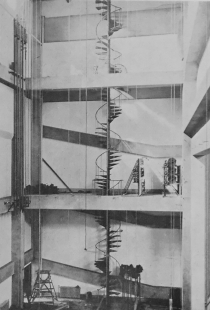
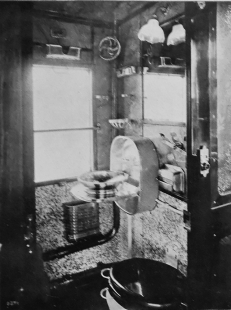

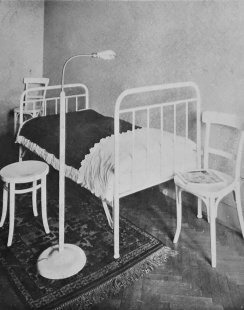
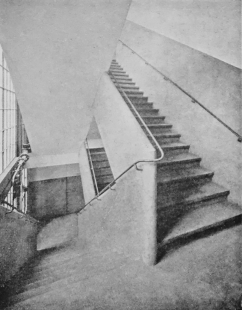


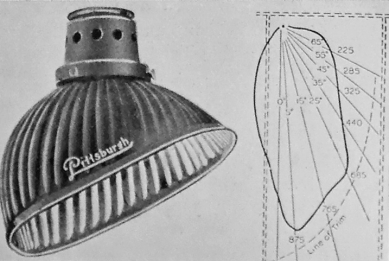
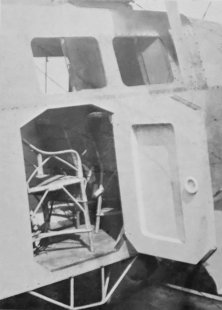
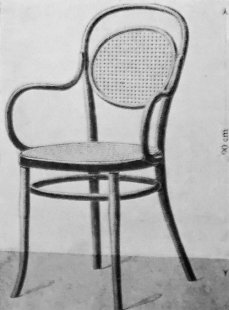


0 comments
add comment
Related articles
0
10.10.2023 | 100 years of Le Corbusier's book Towards a New Architecture
0
13.04.2023 | Le Corbusier in Models and Images - Exhibition at the Faculty of Architecture, CTU
0
22.08.2018 | Le Corbusier: Texts and Sketches for Ronchamp
0
03.02.2018 | Bohuslav Fuchs : Le Corbusier
0
26.09.2007 | Le Corbusier - MODULOR











